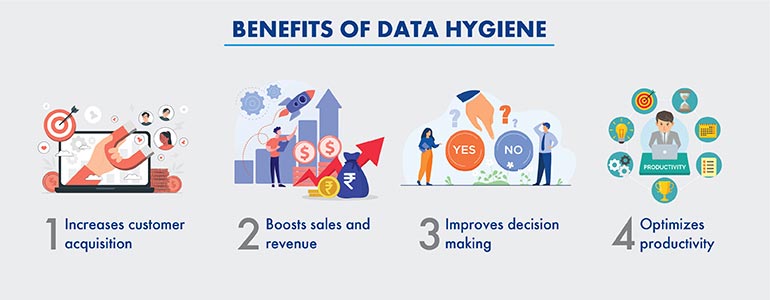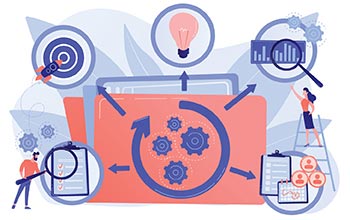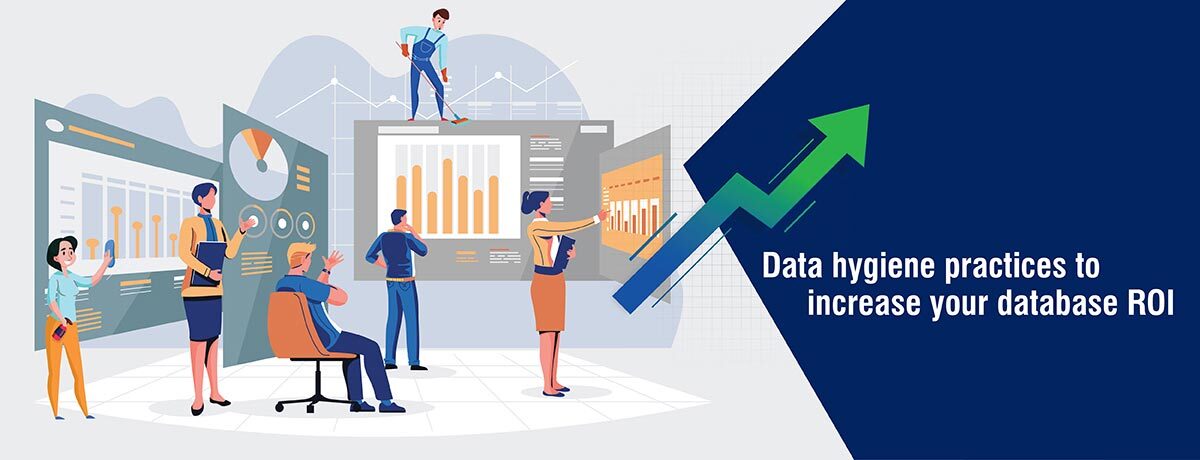Dirty business listing data cripples marketing efforts and results in loss of customers, revenue and reputation. Data hygiene best practices, including audits, standardization and cleansing, helps business listing websites improve customer experience and brand credibility.
Business listing databases provide the ammunition for lead generation, client outreach and marketing efforts. But without data hygiene, listing databases fail to deliver on their promise. Erroneous listing database leads to improper segmentation and inaccurate forecasts. Efforts made to engage customers and improve revenues get wasted in chasing wrong leads.
Despite knowing the impact of dirty data, 57% of B2B marketers don’t have robust database update processes in place. To bridge the gap, they rely on business listing databases who promise to provide valid, clean, and current data. But for the listing providers themselves, maintaining data hygiene becomes a critical 24×7 priority.
Keeping listing databases hygienic isn’t a one-step strategy. Whether your data aggregation team is big or small, experienced or new, maintaining clean data needs proactive measures.
What does hygiene mean for your business listing database?

As a business listing database provider, data quality is the lifeline of your business. All revenue-enabling campaigns of your B2B customers revolve around the data you sell them as a critical asset. Their messaging misses targets and their products fail if they are fail to reach prospects due to dirty listing data. Unless you maintain rigorous data, hygiene and provide clean, valid and current data; you lose customers and credibility.
8 data hygiene best practices for clean and accurate B2B database
Database hygiene is an integrated process that includes data standardization, enrichment, and cleansing. It strengthens the lead pipelines, minimizes sales and marketing costs. It improves conversions for those who use your data to grow profitably.
Let’s have a look at eight data hygiene best practices to keep listing database up-to-date.
1. Assess (as is) data condition

The first step towards your data hygiene initiative should be to assess the quality of your existing database. 27% of database providers are not sure how much of their data is accurate. Performing an audit before charting out the data hygiene strategy is essential.
Data aggregators have a tendency to amass as much information as possible. More is better – but not always. Too much of information can overwhelm and let dirty data slip through.
- Check if data fields are relevant for those who’ll use it to find leads.
- Check if data fields are impactful for those who’ll use it for sales communication.
- Evaluate all customer information to determine fields that are necessary and accurate.
- Audit all the sources you used to collect data, as omni-channel sources can pool in silos.
All these initial steps are critical to devise an effective data hygiene strategy to understand existing data and sources. They reduce the challenges of organizing a listing database.
Data hygiene best practices to standardize and enrich data.
Hire skilled professionals to keep your business listing database up to date.
Get started today »2. Identify data hygiene metrics and tracking mechanism

Set clear expectations about what your ideal database should contain and which fields to include in listings. Create data quality key performance indicators – KPI for fields including contact details, geographic, behavioral, demographic and firmographic data. Draw up a clear strategy to answer:
- How will you meet the KPIs?
- Which tools will you use to track the health of your data?
- Will you hire B2B listing database management experts?
- What are your plans to maintain data hygiene on an ongoing basis?
Any exercise to build KPIs and data tracking will reveal the spot where most of your data quality errors occur. It will help you understand the data challenge adversely affecting your database. B2B listing database management experts were hired to deploy a robust data cleansing and enrichment workflow to clean 17+ million records for a data aggregator from France. It not only improved the CX and revenue of their clients but enhanced the brand credibility of the aggregator across hospitality sector.
3. Standardize contact data at the point of entry

You cannot maintain listing data hygiene while allowing dirty or non-standard data to enter your database unchecked. Before you even start cleaning your database, ensure entry of only standardized data. Non-standardized data is a breeding ground for dirty data. Standardizing data fields helps control that. It also makes identifying and eliminating duplicates easier.
Talk to your team and create a standard operating procedure (SOP) for data standardization.
- List out all fields that should be standardized.
- Convert all numbers, monetary values, and other nominal values for consistency.
- Convert abbreviations to long forms or vice versa – depending on database need.
- Enable case sensitivity unless it is a diehard necessity for any of your clients.
- Normalize salutations i.e. Ms. and Mrs., and spellings according to US/ UK dictionary.
- Establish range constraints to prevent fields from having absurd values.
- Mandate input values to be within a certain threshold.
All these ensure that the data entered is consistent. It will prevent dirty data from entering your listing database. You can be more confident of the quality of new incoming data.
4. Validate the accuracy of your data in real time

Validating all your business listing data against multiple sources is a good idea. Validating 50 million existing records and pushing 150K fresh customer profiles for a USA based B2B data aggregator enabled their clients to identify new prospects and opportunities.
Adding random layers of human and rule-based validation helps to detect anomalies, errors, or broken records.
Validation rules you should set for your database include:
- Cross-reference validation – Compare incoming data to reliable third-party or public datasets, reject information that does not match the recent data, and identify poor data sources. Cross-referencing is crucial for validating business listing data.
- Data type validation – Identify inconsistencies in data types with regard to value. Re-check the entered value for a mismatch entry or if it falls or not between given values.
- Range checking – Set pre-defined rules on numeric data for particular fields. An alert will be raised if the given numeric value does not correspond to the range specified.
- Complex data validation – A lot of business listing databases require extensive and custom validation. In these cases, tool-enabled validation helps to verify the data according to custom parameters.
Following these practices ensures the validity of your data and takes data quality a step further towards meeting benchmarks.
5. Identify and remove duplicates

Duplicate records are a recurring problem for business listing database providers. Many companies use emails to distinguish contact entities. However, many a time, customers enter personal email in one submission form and work email in another. This results in creation of two separate, but duplicate records. Data aggregators should do everything possible to avoid duplicates in their listing databases.
- Use data cleansing tools to automatically analyze bulk raw data and flag dupes.
- Delete duplicate rows using DELETE JOIN statement, an intermediate table, or the ROW_NUMBER () function; whichever suits your database.
- Data cleansing tools use multiple business rules to merge and remove duplicate records, making them integral to data hygiene.
Duplicate records prevent your clients from having a single view of their customers and cause inaccurate reporting. It gives a bad experience for your customers and hurts your brand reputation.
6. Append data

Your business listing database comprises fields including first name, last name, email, and a business address for the contact record. To formulate marketing, sales and customer service strategies, B2B data sellers should enrich the records with data fields like title, phone number, annual revenue, tech stack, contact location, etc.
- Once your data is standardized, validated and de-duped; use third-party databases to append information.
- Add new data elements to the existing database to enrich it further by making it denser.
- Capture information directly from first-party sites like LinkedIn.
- Use software tools to clean and compile the listing database to be used for business intelligence and analytics.
CRM database enriched with 700,000 accurate customer profiles for a video communication giant enhanced their sales revenue and resulted in better marketing ROI.
7. Automate your data hygiene regime

Conducting manual data hygiene is laborious, ineffective and uneconomical. It’s worth the time, efforts and dollars invested in systems or solutions that automatically cleanse, enrich, append and de-dupe records. Errors are inevitable in manual data entry, and human errors are the biggest cause of dirty data.
A single incorrect record can result in a lost lead and thousands of potential dollars of unrealized revenue. Data cleansing solutions can scrub your databases for duplicate records. It also assess voluminous data and use algorithms to detect anomalies and identify outliers resulting from human error. However, in spite of being aware of the potential of enrichment and cleansing systems, only 46% of companies use automated tools to enrich, append, and de-dupe listings database.
8. Update data in near real time

Your B2B listing database decays at a rate of 70% per year. This happens in many ways. Mergers and acquisitions take place, companies dissolve, postal addresses change, contact numbers and email addresses change. Every year up to 18% of all telephone numbers and up to 21% of CEOs change. What’s more, up to 60% of individuals change job functions within their organizations every year.
Data decay occurs at a rapid rate. Setting up a system to monitor and continuously update data is essential to stem data decay. By updating data in near real time, you can save customers from chasing dead-end leads and facing dismal marketing ROIs.
Work with offshore partners or third-party service providers
Offshore partners have proved critical to the growth strategy, flexibility, scalability, resilience, and sustainability of B2B data aggregators. Here’s why:
- Database management solution providers are equipped with research skills and are well-versed with the best practices in data hygiene.
- They offer a ready pool of trained data specialists to relieve you the pressure of hiring and training.
- They invest significantly on technologies which you can leverage to drive higher efficiency.
- Outsourcing companies deal with clients from diverse industries, which empower them with wider experience and expertise in list building and database enrichment.
How do you see data hygiene changing in the future?
Modern data is dynamic in nature and constantly changing. The moment you finish cleansing, standardizing, and updating, it starts to decay again. Thus, data hygiene has become a concern for B2B data aggregation companies. It is going to get more sophisticated as the volume and type of data collected is witnessing exponential increase.
Use of Artificial Intelligence and Machine Learning is increasing in data hygiene setups for identifying, fixing and mitigating listing data issues. AI & ML will enhance the quality and speed of data hygiene operations. Technology advancements have already changed data hygiene exercises from onetime database audits to ongoing, automated, real-time data maintenance. The practice is here to stay and the need for data hygiene will keep growing as more and more data becomes accessible, and data finds more uses.
Are you losing reputation due to dirty business listing data?
Data cleansing and standardization, helps you improve customer experience and brand credibility
Get started today »




